Announcements

It was a cloudy Monday in November, just a normal day running errands on my day off. That changed when I received a call from a man in lower Westchester about an injured bird. But not just any injured bird…it was a Purple Gallinule!
I was taken aback. “A what?” I said. I was impressed this birder knew the species and that it didn’t belong in New York. Gallinules are native to Florida and South America! By the time I arrived in Hawthorne, NY, at the Gate of Heaven Cemetery’s pond, the man who called, Steve, and three other people had the small bird contained.
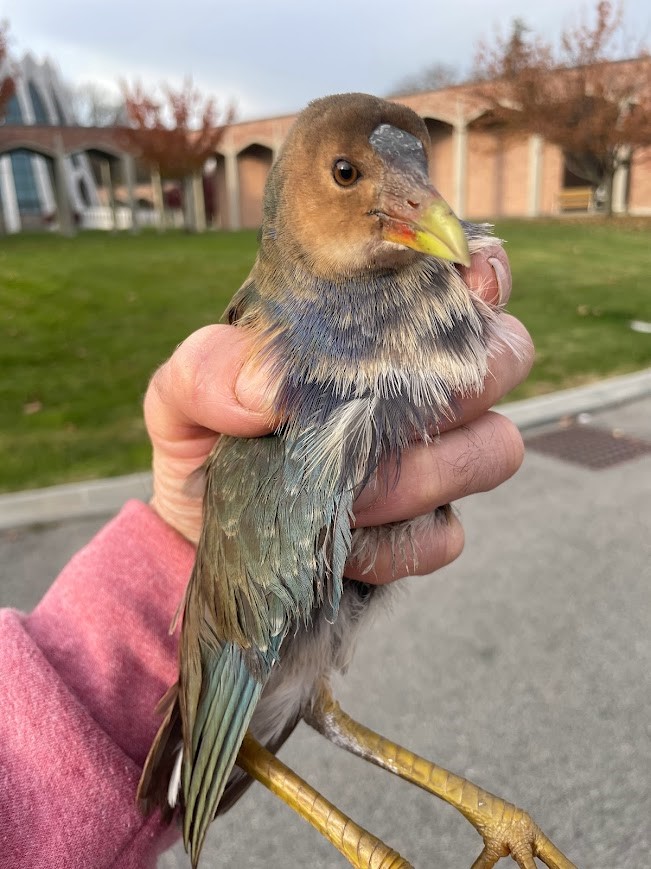
After examining the multi-colored bird, I found that it was quite thin and weak, and definitely couldn’t fly. It was clearly a juvenile, as its plumage wasn’t as bright as an adult’s and it made sense that he was alone since he may have gotten lost on his first migration. I thanked Steve for helping and told everyone that I would share updates on the bird’s progress. As I drove away, I thought to myself, “Here’s a new one!”
When I got home, I started researching the gallinule’s habits, diet and native range so I could start the rehab process. They are water birds that live in marshes, rice paddies, and hop around on lily pads with their long legs and toes. A gallinule’s diet primarily includes different seeds and fruit from water plants, and sometimes rice. Also, they eat a lot of water bugs, insects, and occasionally small crustaceans.
First, I set up a temporary enclosure at my house. Then, I offered him rice, seeds, and dried meal worms. He loved the rice and seeds, obviously very hungry from his ordeal.
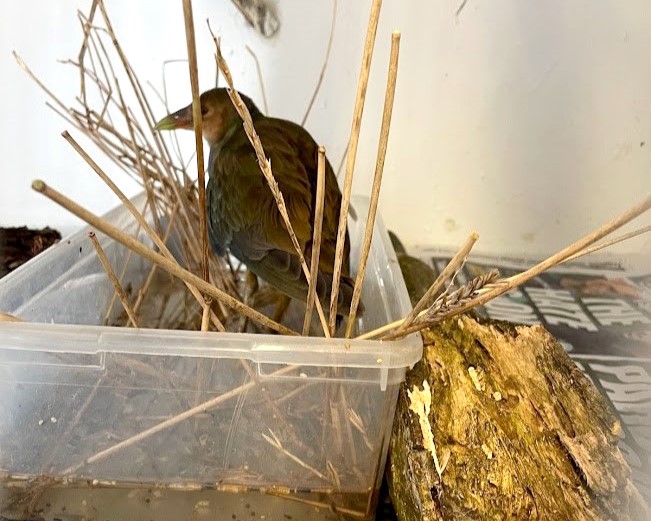
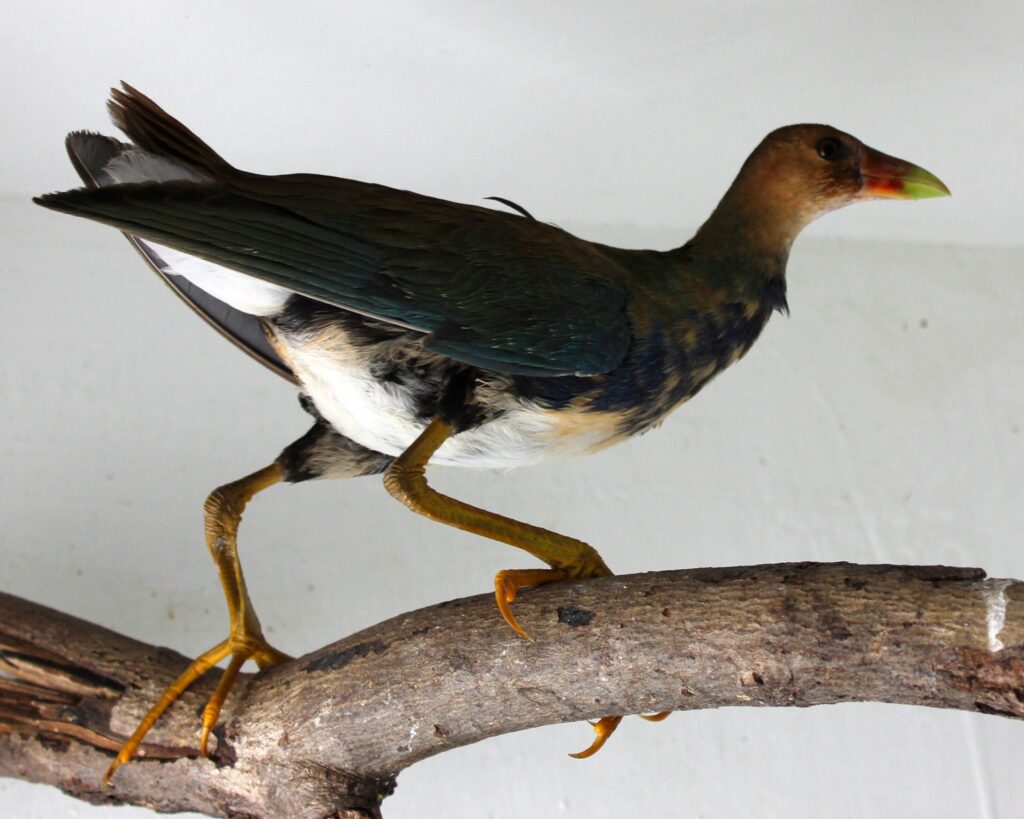
The next morning, I brought him with me to work at the Green Chimneys Wildlife Center and set him up in our bigger hospital cage. There, he could perch and stretch his wings. I added a larger pool for him to wade in for his food, complete with some tall grass to make him feel more comfortable.
In addition to the seeds and rice, I started incorporating more insects into his diet. I tried everything we had at the Wildlife Center: super worms, crickets, waxworms, baby cockroaches, even super worm beetles. He could not have been happier and he ate like crazy.
After a week, the gallinule started perching, showing that he was getting stronger. We put live crickets in his cage and he started hunting and gobbling them down. Most importantly, this bird was getting better!
Now it was time to see if it could fly and build up some strength. But the weather in New York prevented him from spending time outside every day. On warmer days we placed him in our brand-new small bird flight cage but brought him inside as the temperature dropped at night. By December, it was too late for him to migrate, and too far. Additionally, as a juvenile, it would be very hard for him to find his way.
Our goal for all rescued birds rehabilitated at Green Chimneys Wildlife Center is to give them the best chance for survival. For the gallinule, that meant a warmer climate. So, the dilemma became, how do we get him down to Florida?
After updating Steve, our gallinule rescuer, about the bird’s progress, I learned that he planned to drive to Florida in January and would love to help transport him. “How perfect!” I thought, air travel is not always the best for birds. So, where in Florida does he bring the bird?
A former Green Chimneys volunteer suggested some wildlife centers in Florida. Ultimately, Busch Wildlife Sanctuary was impressed with the story and incredibly happy to help. Likewise, I was happy to find a place for the gallinule to continue his rehab and hopefully, release in a much warmer and natural climate.
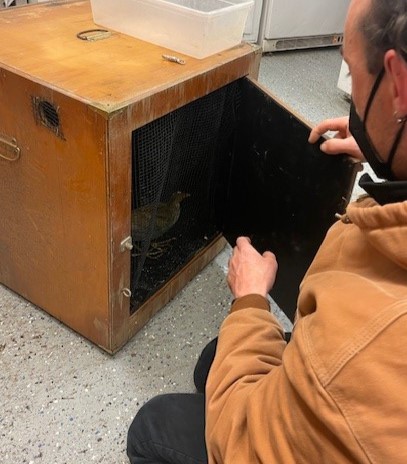
I set up a nice box for transport so the gallinule could be as comfortable as possible on his journey. The box was big and accommodating with a natural perch inside, soft floor, and an area for a water/food bowl. The whole trip would total 24 hours, leaving Green Chimneys early Thursday morning and arriving late Friday afternoon at Busch Wildlife Sanctuary.
Finally, I met Steve and his partner at the Wildlife Center to show him the gallinule and go over his care while traveling. The bird was very feisty as I loaded him into his travel carrier and he let out a little call, as if to say “I’m ready to go!”
Once they arrived in Florida, I received videos of the gallinule’s arrival and flight out of his carrier at Busch Wildlife Sanctuary. Their staff looked him over, noted his great health, and set him up in his enclosure there. After eating well, he remained feisty, letting everyone know he was ready to go back to the wild. They needed to find a release site that would be perfect for the gallinule.
Busch Wildlife Sanctuary maintains a partnership with Palm Beach County Environmental Resource Management (PBC ERM), which manages eight natural areas that Busch often accesses for rehabilitated animal releases. PBC ERM offered Winding Waters, a site that has known breeding purple gallinules, as a release location for this bird. This 548-acre natural area contains swamps, marshes, and wetlands which are ideal for their habitat. In addition to gallinules, birdlife is abundant with bald eagles, anhingas, wood storks, green herons, belted kingfishers, and roseate spoonbills.
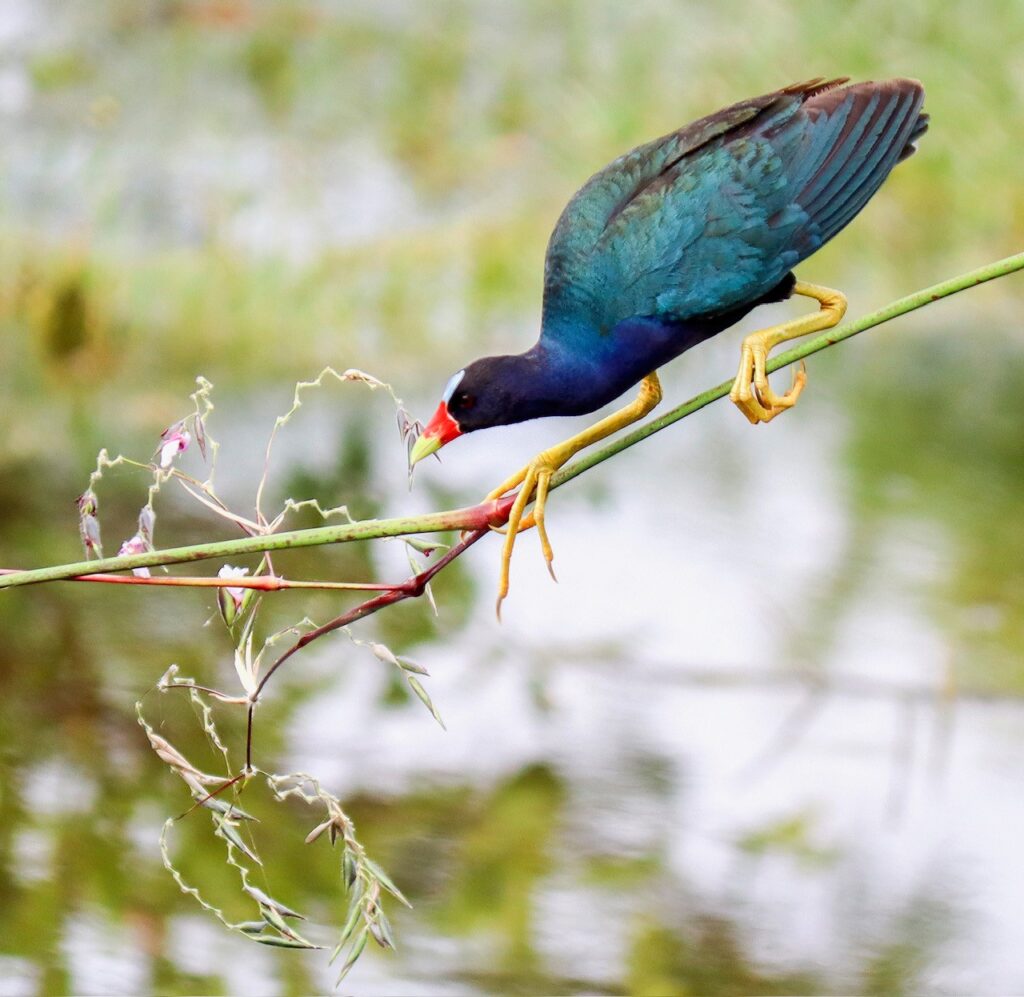
Seven days after its arrival in Florida, the gallinule was brought to Winding Waters and released. He ran right into the marshes, and starting wading through the vegetation, hunting for his next meal. About a week later, PBC ERM reported feeling pretty certain they had spotted the bird foraging in the swamp. Clearly, it has found its home.
Green Chimneys maintains nearly 50 birds of prey at the Wildlife Rehabilitation Center, which provides rescue, rehabilitation and continued care for injured, orphaned and distressed wildlife, primarily birds of prey. Birds that can be rehabilitated are returned to the wild; those with permanent disabilities are sheltered here, and provide a special learning experience for the children—and staff—at Green Chimneys. Learn more →
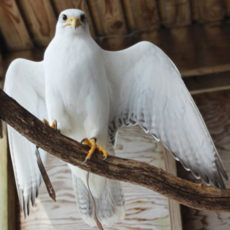
Crowned the best for falconry in medieval times, gyrfalcons were once reserved for kings. As the largest falcon in the world, with exquisite plumage ranging from bright white to deep charcoal, gyrs are revered for their powerful skill of flight. Their long wings make hunting waterfowl from 3,000-feet-high a feasible and fantastical feat. This falcon was flown in the sport of falconry for several years.